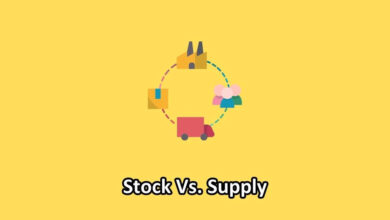In a world marked by constant change, delving into the historical tapestry of socio-economic structures becomes a crucial exercise. As we navigate the currents of time, understanding the nuances between feudalism and capitalism can shed light on the foundations of our modern society.
Feudalism vs. Capitalism (Comparison Chart)
| Factors | Feudalism | Capitalism |
|---|---|---|
| What are They? | Feudalism refers to a medieval socio-economic system where landownership and labor were tied to hierarchical relationships, with lords granting land in exchange for service or produce. | Capitalism is an economic system characterized by private ownership of the means of production, market-driven exchange, and profit accumulation, promoting individual entrepreneurship and competition. |
| Economic Structure | Feudalism's economic foundation rests on agricultural production, and its social hierarchy remains rigid and predetermined. | Capitalism thrives on industrialization, commerce, and a dynamic market economy, fostering innovation and adaptability. |
| Land Ownership | In feudalism, land ownership is a symbol of authority, with monarchs granting land to nobles. | Capitalism sees wealth emanating from ownership of businesses and diverse assets, reflecting a shift from agrarian-based power dynamics to entrepreneurial and industrial prowess. |
| Social Mobility | Feudal societies are marked by a fixed social order, restricting upward or downward movement. | In capitalism, social mobility is more fluid, allowing individuals to ascend or descend the social hierarchy based on merit, skills, and opportunities. |
| Labor Relations | In feudalism, labor relations are characterized by serfdom, where peasants are bound to the land. | Capitalism, on the other hand, relies on wage labor, granting workers the freedom to choose their employment and fostering a more flexible and dynamic labor market. |
What is Feudalism?
Feudalism, a medieval social and economic structure, was characterized by a hierarchical system of land ownership and labor obligations. Lords owned vast estates, and in exchange for protection, peasants worked the land. It was a symbiotic relationship governed by a code of honor and obligation.
Feudal Social Structure
- Nobility: The pinnacle of feudal society, the nobility, comprised kings, lords, and other titled individuals. They held vast lands granted by the monarch, extracting tribute and service from those below them in exchange for protection.
- Peasantry: At the base of the feudal pyramid were the peasants. Tied to the land, they toiled for their lords and were bound by serfdom, limiting their mobility and life choices.
What is Capitalism?
Capitalism, a socio-economic system, thrives on private ownership of the means of production and a free market. In this competitive landscape, individuals and corporations pursue profit, shaping a dynamic economic environment.
Capitalist Social Structure
- Class Distinctions: Capitalism ushers in a different societal order, characterized by class distinctions based on wealth and ownership. The bourgeoisie, or capitalist class, owns the means of production, while the proletariat, the working class, sells their labor for wages.
- Social Mobility: Unlike feudalism, capitalism allows for social mobility. Individuals can transcend their birth circumstances through entrepreneurship, education, or strategic career moves.
Key Differences Between Capitalism and Feudalism
- Economic Structure: Feudalism relies on agriculture and a fixed social order, while capitalism is driven by industrialization, commerce, and a dynamic market economy.
- Land Ownership: In feudalism, land is the source of power and wealth, granted by the monarch. In capitalism, wealth is derived from ownership of businesses and assets.
- Social Mobility: Feudal societies are static, with limited social mobility. Capitalism, in contrast, allows individuals to climb or descend the social ladder based on merit and opportunity.
- Labor Relations: Feudalism is characterized by a system of serfdom, where peasants are tied to the land. Capitalism relies on wage labor, with workers free to choose their employment.
Impact on Individual Freedom
Feudal Constraints on Freedom
- Serfdom and Limited Mobility: Under feudalism, serfs were bound to the land, restricted in movement, and subject to the lord’s authority.
- Dependence on Lords: The peasantry depended on the nobility for protection, justice, and livelihood, resulting in limited personal freedom.
Capitalist Individual Freedom
- Economic Opportunities: Capitalism fosters economic opportunities, allowing individuals to choose professions, start businesses, and accumulate wealth.
- Personal Liberty and Choices: In a capitalist society, personal liberty is paramount. Individuals have the freedom to pursue their aspirations and make choices based on personal preferences.
Conclusion
In our journey through the corridors of feudalism and capitalism, we unveil not just historical epochs but blueprints that have etched themselves into the fabric of our existence. As we stand at the crossroads of history and modernity, the echoes of feudal obligations and capitalist ambitions resonate, guiding us toward a future shaped by the lessons of our past.



